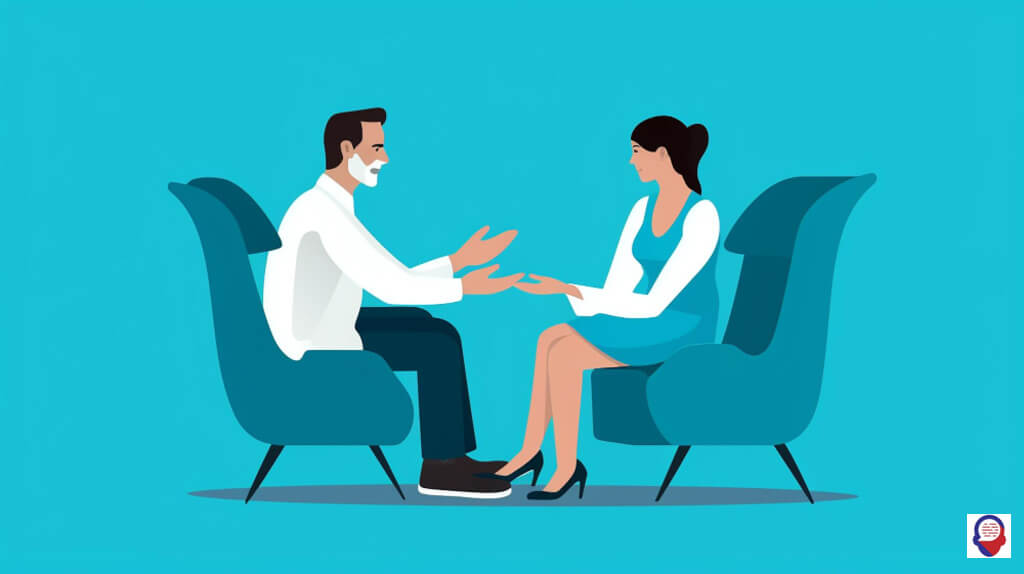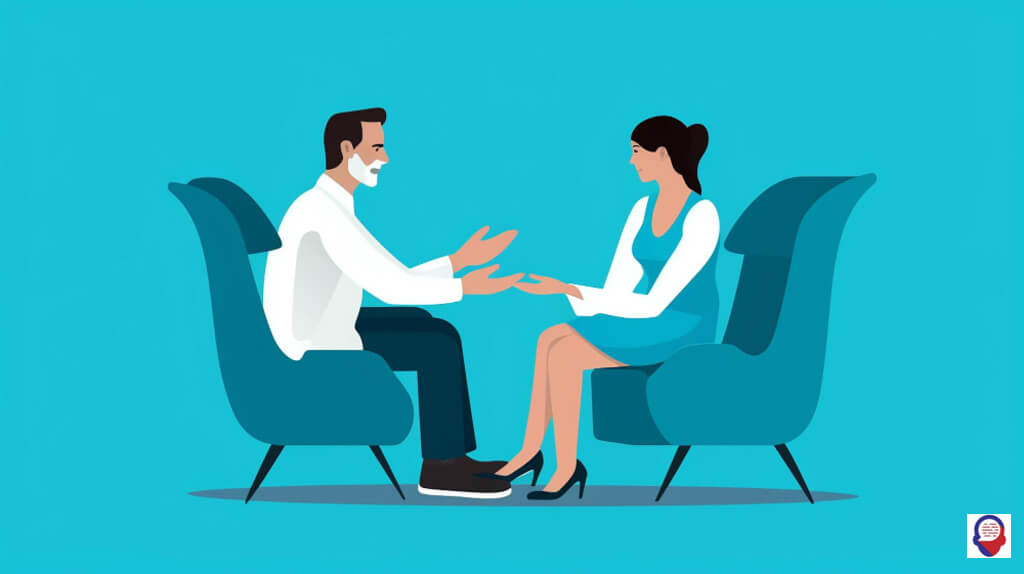Confronting OCD: Your Ultimate Guide to Exposure Therapy
Obsessive-Compulsive Disorder can feel like being trapped in a prison of your own mind. It whispers terrifying possibilities and demands impossible rituals, shrinking your world one fear at a time. The cycle of intrusive thoughts and compulsive behaviors can be exhausting, isolating, and utterly relentless. But what if there was a key to unlock that prison? A proven method not just to manage the symptoms, but to fundamentally break the cycle and reclaim your life.
This key has a name: Exposure and Response Prevention, or ERP. It stands as the most powerful, evidence-based treatment for OCD, a beacon of hope for millions. This article is your comprehensive guide to understanding this transformative therapy. We will demystify the process, explore how it targets the very engine of OCD, and show you why facing your fears, in a structured and supported way, is the most courageous and effective path to freedom.

What Exactly Is Obsessive-Compulsive Disorder?
Obsessive-Compulsive Disorder, or OCD, is a serious mental health condition defined by a cycle of obsessions and compulsions. It is not a personality quirk or a preference for cleanliness, but a neurobiological disorder that causes significant distress and impairs daily functioning.
Obsessions are the first part of the cycle. These are not simple worries, they are persistent and unwanted thoughts, images, or urges that flood the mind, causing intense anxiety, disgust, or a feeling that things are just not right. They are intrusive and feel alien to the person experiencing them, often revolving around themes of harm, contamination, religion, or perfectionism.
Compulsions are the response to these obsessions. They are repetitive behaviors or mental acts that a person feels driven to perform to reduce the anxiety caused by the obsession or to prevent a dreaded event from happening. These can be visible actions like washing, checking, or ordering, or they can be hidden mental rituals like praying, counting, or mentally reviewing events to seek certainty. The relief they provide is always temporary, setting the stage for the cycle to begin all over again.
This creates a vicious feedback loop. An obsession creates crushing anxiety. A compulsion is performed to gain a moment of relief. The brain then learns a dangerous and false lesson: that the compulsion was necessary to prevent disaster or manage the anxiety. This reinforces the obsession, making it stronger and more frequent the next time, cementing the very disorder it seeks to alleviate.

What Is Exposure and Response Prevention (ERP) Therapy?
Exposure and Response Prevention, commonly known as ERP, is a specific type of Cognitive-Behavioral Therapy (CBT) designed to break the debilitating cycle of OCD. It involves two core components: gradually and repeatedly confronting the thoughts, images, objects, and situations that trigger your obsessions (the exposure), while actively choosing not to perform the compulsive behaviors that typically follow (the response prevention).
The "Exposure" part of the therapy is a systematic process of facing your fears. It is done collaboratively with a therapist in a controlled and planned way. Instead of avoiding the things that cause anxiety, you learn to approach them, starting with situations that are only mildly distressing and slowly working your way up to more challenging triggers.
The "Response Prevention" element is arguably the most crucial part of the treatment. After confronting a trigger during an exposure, you make a conscious commitment to resist the overwhelming urge to perform your compulsion. This means tolerating the anxiety and uncertainty without resorting to the ritual that promises temporary relief.
By combining these two elements, ERP directly targets the core mechanism of OCD. It teaches your brain, through direct experience, that the feared consequences you worry about do not actually happen. It also demonstrates that the intense anxiety you feel, while deeply uncomfortable, is not dangerous and will naturally decrease on its own without the need for a compulsion.

Why Is ERP Considered the Best Treatment for OCD?
ERP is considered the gold-standard treatment for OCD because it is the only therapy that directly interrupts the disorder’s engine of reinforcement. It works by creating new learning in the brain through a process called habituation, effectively rewiring the fear response over time.
The power of ERP lies in its ability to facilitate habituation. When you repeatedly face a feared trigger without performing a compulsion, your brain slowly learns that the stimulus is not a genuine threat. The initial spike of anxiety eventually begins to lessen in intensity and duration with each exposure. You are teaching your brain, through lived experience, that you can handle the distress and that the world does not fall apart if a ritual is not performed.
Unlike some forms of talk therapy that might focus on finding the ‘root cause’ of the OCD, ERP focuses on the ‘here and now’ of what is maintaining the problem. While understanding your history can be helpful, for OCD, insight alone is rarely enough to stop the powerful pull of compulsions. In fact, endlessly discussing the content of obsessions can sometimes inadvertently strengthen them. ERP gets straight to the behavioral heart of the matter.
Decades of rigorous scientific research have consistently shown ERP to be the most effective psychological treatment for OCD. Major health organizations and treatment guidelines around the world recommend it as the first-line intervention. Its effectiveness is not just theoretical, it is backed by an overwhelming amount of clinical evidence demonstrating significant and lasting improvement for the majority of individuals who complete the treatment.

How Does an ERP Therapy Session Actually Work?
A typical ERP therapy session is an active and collaborative process between you and your therapist, focused on systematically confronting OCD. It begins with an assessment to understand your specific obsessions and compulsions, which are then used to create a personalized treatment plan centered around a fear hierarchy and the practice of exposures.
The initial sessions are dedicated to education and planning. Your therapist will explain the OCD cycle in detail and provide a clear rationale for how ERP works to break it. Together, you will identify all the situations, thoughts, and objects that trigger your anxiety and the corresponding rituals you use to cope. This information becomes the blueprint for your therapy.
From there, you will work together to construct your fear hierarchy. Once this roadmap is in place, the core of the therapy begins: conducting exposures. You will start with a lower-level item, engaging with the trigger in a planned way during the session, with your therapist providing guidance and support as you resist the urge to perform any compulsions. The session is dedicated to this practice, learning to sit with the anxiety until it naturally subsides.

What is a Fear Hierarchy?
A fear hierarchy, sometimes called an exposure ladder, is a core tool in ERP that lists your specific OCD triggers in order from least anxiety-provoking to most anxiety-provoking. This list is typically rated on a 0-100 scale, where 0 represents no anxiety and 100 represents extreme panic or distress.
The purpose of the hierarchy is to provide a structured, gradual, and manageable path for treatment. It ensures that you are not thrown into your worst-case scenario on day one, which could be overwhelming and counterproductive. Instead, it allows you to build confidence and skills by starting with challenges that are difficult but achievable.
Creating the hierarchy is a collaborative process. You and your therapist will brainstorm all the different ways your OCD manifests and then carefully rank them. As you successfully master exposures at one level of the hierarchy, you gain the momentum and self-efficacy needed to tackle the next, more challenging step. It turns a seemingly insurmountable mountain of fear into a series of conquerable hills.

What Happens During an Exposure?
During an exposure, you will intentionally and purposefully engage with a trigger from your fear hierarchy in a controlled and repeatable manner. The goal is to activate the obsessional fear and the associated anxiety without allowing yourself to avoid the situation or escape the feeling.
The nature of the exposure depends entirely on your specific type of OCD. If you have contamination fears, an exposure might involve touching a public doorknob or the bottom of your shoe. For someone with checking compulsions, it could mean locking the door and walking away without looking back. For obsessions about harm, it might involve holding a knife while thinking about a feared outcome.
Your therapist acts as your coach and guide throughout this process. They will help you stay focused on the task and encourage you to remain in the situation until your anxiety level begins to naturally decrease, a process that can take anywhere from a few minutes to much longer. The exposure is repeated until the trigger no longer elicits the same intense fear response, demonstrating to your brain that it is a false alarm.

How Does Response Prevention Fit In?
Response prevention is the deliberate act of stopping the compulsion, and it is the essential ingredient that makes the exposure effective. It is the moment where you face the anxiety triggered by the exposure and make the conscious choice not to perform the ritualistic behavior or mental act that you would normally use to find relief.
This is where the cycle of OCD is truly broken. By preventing the response, you are preventing the temporary relief that reinforces the entire disorder. You are forcing your brain to confront the core belief that something terrible will happen if you do not perform the compulsion, and you are allowing it to learn, through direct experience, that this belief is false.
This is often the most difficult part of the therapy, as the urge to perform a compulsion can feel incredibly powerful, like an undeniable command. Resisting it requires immense courage. Your therapist will support you through this, teaching you to tolerate the distress and ride the wave of anxiety, knowing that it will eventually crest and subside on its own. It is in this challenging space that true healing and liberation from OCD begins.

Is ERP Therapy Frightening or Unsafe?
ERP therapy is designed to be challenging and will intentionally provoke anxiety, so it is natural to feel frightened by the prospect of it. However, when conducted by a trained professional, it is a very safe and controlled process where you are always in charge.
While the idea of facing your deepest fears head-on sounds terrifying, it’s important to remember that you are already living with immense fear every day. The difference with ERP is that the anxiety is purposeful. It is a temporary discomfort that leads to long-term freedom, rather than the chronic, pointless suffering of untreated OCD. Your therapist is an expert in managing this process.
A qualified ERP therapist will never force you to do something you are not willing to do. The pace of therapy is collaborative, guided by your fear hierarchy. You start with manageable challenges and build from there, ensuring you are never pushed too far, too fast. The entire process is transparent, and you are a partner in every decision made. The goal is not to re-traumatize you, but to empower you by showing you that you are stronger than your anxiety.

What Kinds of OCD Can ERP Treat?
ERP is a versatile and robust treatment that is effective for all known subtypes and presentations of Obsessive-Compulsive Disorder. Whether your compulsions are overt and easily observable or entirely internal and mental, the underlying mechanism is the same, and ERP is designed to target it directly.
This includes the more widely recognized forms of OCD, such as those centered on contamination and washing, or symmetry and ordering. It is equally effective for checking compulsions, hoarding, scrupulosity (religious or moral obsessions), and relationship OCD.
Crucially, ERP is also the gold-standard treatment for forms of OCD that are primarily obsessional, sometimes misleadingly called "Pure O". In these cases, the compulsions are not external behaviors but are covert mental rituals. ERP adapts to these presentations using specialized techniques to address the internal cycle of obsession and compulsion with the same powerful principles.

How Does ERP Work for Contamination OCD?
For individuals with contamination OCD, ERP involves systematic exposure to feared contaminants while resisting the powerful urge to wash, clean, or avoid. The goal is to learn that contact with these "contaminated" items does not lead to the dreaded outcome, and that the feeling of being "dirty" or "contaminated" will fade without rituals.
Exposures are tailored to the person’s specific fears. This might start with something low on the hierarchy, like touching a clean doorknob and then waiting to wash your hands. As you progress, you might move on to touching objects in public spaces, handling money, or even touching a toilet seat or the bottom of a shoe.
The response prevention is critical. After the exposure, you would be guided to refrain from hand washing, using sanitizer, or changing clothes for a set period. You might also be encouraged to spread the "contamination" by touching your phone, your face, or your personal belongings, demonstrating that the fear is disproportionate to any actual risk.

What About Checking OCD?
With checking OCD, ERP focuses on creating and learning to tolerate uncertainty. The compulsion to check is driven by an intolerance of doubt, a need to be 100% certain that something bad has not happened or will not happen. ERP works by intentionally leaving things in a state of uncertainty and resisting the urge to check.
An exposure might involve locking the front door just once and immediately leaving the house, fighting the urge to go back and jiggle the handle. It could mean sending an important email after proofreading it only one time, or driving past a bump in the road without circling back to check if you hit something.
The response prevention is the act of walking away and accepting the sliver of doubt. You sit with the anxiety that asks, "What if the door is unlocked?" or "What if there was a typo in that email?". By doing so, you learn that you can live with uncertainty and that your constant checking was not actually preventing disaster, it was only feeding your OCD.

Can ERP Help with “Pure O” or Mental Compulsions?
Yes, ERP is highly effective for primarily obsessional OCD, often called "Pure O," where the compulsions are primarily mental. In these cases, the exposures are often imaginal, and the response prevention targets the hidden mental rituals that are used to neutralize intrusive thoughts.
An imaginal exposure involves creating a script or audio recording of your feared thought or scenario and repeatedly reading or listening to it. For someone with harm obsessions, this might be a detailed story about hurting a loved one. For someone with scrupulosity, it could be a script about committing a blasphemous act. This brings the feared thought into the open instead of trying to suppress it.
Response prevention then targets the mental compulsions. This means actively resisting the urge to mentally review events for evidence, pray for forgiveness, replace a "bad" thought with a "good" one, or seek reassurance from yourself or others. You learn to let the intrusive thought just be a thought, without engaging with it or trying to neutralize it, which robs it of its power.

How Long Does ERP Therapy Take to Work?
The duration of ERP therapy can vary significantly from person to person, but many people experience substantial improvement in their symptoms within 12 to 20 weekly sessions. Some intensive outpatient or residential programs can achieve similar results in a matter of weeks.
Several factors can influence the timeline. The severity and complexity of the OCD, the presence of any co-occurring conditions like depression or anxiety disorders, and, most importantly, your level of commitment and engagement with the process all play a role. A person who diligently practices their exposures between sessions will likely see progress faster than someone who does not.
It is crucial to have realistic expectations. ERP is not a quick fix or a magic pill. It is a skill-building process that requires consistent effort and practice. There will be challenging days and moments of doubt. However, the progress is often steady, and the skills you learn are designed to be used for the rest of your life, helping you manage any future OCD flare-ups effectively.

What Are the Keys to a Successful ERP Journey?
The most critical factors for achieving success with ERP are finding a therapist who specializes in this treatment, cultivating a genuine willingness to experience temporary discomfort for long-term gain, and demonstrating a consistent commitment to practicing exposures and response prevention, especially between sessions.
These three pillars, a qualified guide, personal motivation, and dedicated practice, form the foundation of a transformative ERP experience. When they are all in place, the potential for profound and lasting recovery from OCD is incredibly high. Success is not about being fearless, it is about being courageous despite the fear.

Why is a Specialist Therapist So Important?
Finding a therapist specifically trained and experienced in ERP is paramount because it is a highly specialized treatment that differs significantly from standard talk therapy. A general therapist, while well-intentioned, may lack the specific skills to design an appropriate fear hierarchy, guide exposures safely, or, most importantly, identify and stop the subtle forms of reassurance that can undermine treatment.
An ERP specialist understands the nuances of the disorder. They know how to pace the therapy correctly, how to motivate you without being forceful, and how to spot hidden compulsions, like mental reviewing or reassurance-seeking, that can sabotage progress. Attempting ERP with an untrained therapist can be ineffective at best and potentially harmful at worst, making it essential to seek out a true expert.

How Important is Willingness and Motivation?
Your personal willingness to engage in the process is the fuel that powers the entire ERP journey. The therapy requires you to voluntarily step into anxiety-provoking situations and resist powerful urges. This cannot be forced, it must come from a deep-seated motivation to get your life back from OCD.
This means making a conscious choice to prioritize long-term freedom over the short-term comfort offered by compulsions. It involves accepting that you will feel anxious and uncomfortable during the process. This willingness is not about being brave or fearless from the start, it is about being willing to try, even when you are scared. Your motivation is the engine of your recovery.

What is the Role of Homework in ERP?
Homework, which consists of practicing exposures on your own between therapy sessions, is absolutely essential for success. One hour of therapy per week is not enough to rewire years of ingrained OCD habits. The real change happens when you take the skills learned in your therapist’s office and apply them to your daily life.
Practicing homework generalizes the learning from the clinical setting to the real world. It builds your confidence and proves to you that you can manage your OCD independently. Consistently completing your homework assignments is what solidifies your progress, accelerates your recovery, and ultimately empowers you to become your own therapist, equipped to handle OCD for the long haul.
Frequently Asked Questions

Can I do ERP on my own? While some self-help books and apps for ERP exist, it is strongly recommended to begin your journey with a qualified therapist. A professional can provide an accurate diagnosis, create a personalized and safe exposure plan, offer crucial support during distressing moments, and help you troubleshoot challenges that are incredibly difficult to navigate alone. They ensure the therapy is being applied correctly for maximum benefit.

What if my anxiety becomes too overwhelming during an exposure? A skilled ERP therapist is trained to manage this exact situation. They design the fear hierarchy to be gradual, so you are never asked to do something you are completely unprepared for. They also teach you distress tolerance skills beforehand. If anxiety spikes, they will guide you through it, reminding you that the feeling is temporary and not dangerous, helping you ride the wave until it naturally subsides without resorting to a compulsion.

Does ERP get rid of obsessions completely? The primary goal of ERP is not to eliminate 100% of intrusive thoughts, as virtually everyone experiences strange or unwanted thoughts from time to time. The goal is to fundamentally change your relationship with them. Through ERP, you learn to see your obsessions as irrelevant mental noise, not as urgent threats, so they no longer cause significant distress or trigger the need for a compulsive response.

Is medication necessary alongside ERP? ERP is a powerful and effective standalone treatment for OCD. However, for some individuals, medication can be a helpful adjunct. Antidepressants known as SSRIs can help to lower the baseline level of anxiety, which can make it feel less overwhelming to engage in the challenging work of exposures. The decision to use medication is a personal one and should be discussed with a qualified medical doctor or psychiatrist.

***
Taking that first step towards confronting OCD is the most powerful move you can make. It’s a declaration that you are ready to fight for a life defined by your values, not your fears. At Counselling-uk, we understand the courage this takes.
Our mission is to provide a safe, confidential, and professional space where you can connect with specialists trained in evidence-based therapies like ERP. We are here to offer expert guidance and unwavering support for all of life’s challenges, especially the ones that feel as daunting as OCD. You do not have to walk this path alone. Reach out today, and let us help you find the way forward.





Obsessive-Compulsive Disorder (OCD) can be a long-term, debilitating condition that affects hundreds of thousands of people in the United States. Fortunately, there is hope for those struggling with this mental health disorder. Exposure therapy is a type of treatment that has been proven to be effective in managing OCD symptoms over time. This article will explore the long-term outcomes for patients who undergo exposure therapy.